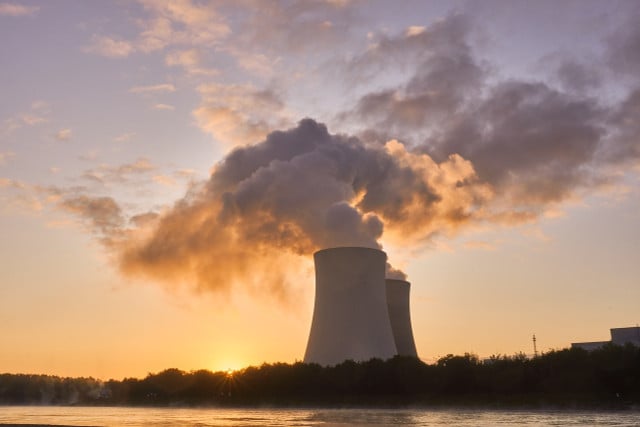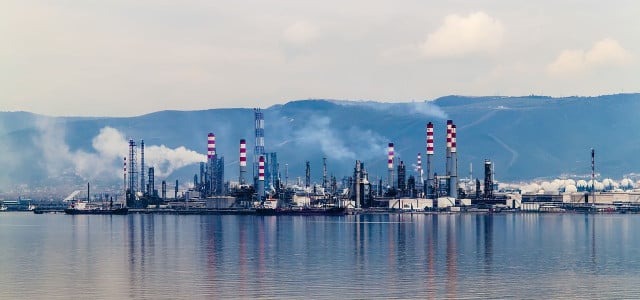These five examples of non-renewable resources will give you an idea of how destructive the use of them can be, and why experts insist that we must transition to renewables.
There are many types of resources that humans use for electricity, heating, fuel, manufacturing, and more. The difference between non-renewable and renewable resources is that renewable resources naturally replenish themselves, while non-renewable resources do not.
For example, wind power, solar power, hydroelectric power, geothermal power and biomass fuels are all considered types of renewable energy because the power comes from natural elements of the Earth, which are constantly regenerating. The sun shines consistently, and this is one of the biggest benefits of solar panels: it is possible to continuously absorb energy from sunlight through the panels, without ever running out of rays of sunshine.
Alternatively, non-renewable resources are resources which we can and will run out of at some point. Non-renewable resources are a hot topic of discussion because the world currently relies heavily on them for energy.
The most commonly discussed examples of non-renewables are the fossil fuels of oil, natural gas, and coal. However, there are more non-renewables that we rely on, which aren’t necessarily used for energy like fossil fuels are. These include nuclear fuels, Earth minerals and metal ores. Because these resources cannot be replaced, it is imperative that we find and develop renewable resources to be used instead.
Well-Known Examples of Non-Renewable Resources: The Fossil Fuels

Fossil fuels were formed over millions of years from deceased plants and animals, which had solar energy trapped inside of them. Over time, pressure and heat have turned these fossils into crude oil, natural gas, and coal. They are found in layers of Earth’s rock and sediment.
Humans access and collect these resources through mining, drilling, and hydraulic fracturing, also known as fracking. All of these practices are harmful to the environment. Finally, when burned, the trapped energy remaining in fossil fuels is released. Because fossil fuels were formed over thousands of years, they are considered non-renewable resources.
- Oil and petroleum are utilized in various ways. Primarily, petroleum is a major energy source used to propel vehicles, heat buildings and create electricity. Petroleum refers to crude oil as well as the products made from refined crude oil. It is also used as a product in many products, from cosmetics and shampoos to polyurethane clothing, furniture and bedding. Humans rely on oil across many industries. For example, it is industrial farming and food transportation — powered by oil — which make it possible for bananas to be purchased all over the world at any time of year.
- Natural gas is primarily used for heating buildings and water and for generating electricity in the industrial, residential and commercial sectors. For example, about 50 percent of US homes use natural gas for space heating and water heating. The transportation sector also uses natural gas to fuel pipelines and vehicles. Learn more: The Main Disadvantages of Natural Gas Explained
- Coal is largely used for electricity in commercial, residential and industrial settings. In 2021, almost 11 percent of all electricity was generated by coal in the US. Still, 15 states used coal as their largest source of electricity generation that year.
4. Nuclear Fuels



While nuclear energy itself is considered a renewable energy source, the process of harvesting nuclear energy is what makes nuclear fuels non-renewable. Nuclear energy is released by splitting the nucleus of an atom, in a process called nuclear fission.
The material used in nuclear power plants, uranium, is not renewable. Uranium is found in rocks and the specific type used in nuclear power plants, U-235, is highly scarce and non-renewable. This makes the process of collecting nuclear energy non-renewable as well.
Nuclear energy can also produce radioactive waste, which is toxic and dangerous to living things. The US currently creates more nuclear power than any other country, next to France and China. Since 1990, the US has generated about 20 percent of its electricity from nuclear power plants.
5. Minerals and Metal Ores



Earth minerals and metal ores are non-renewable resources found in the Earth’s crust. They take between tens of thousands to millions of years to form through plate tectonics, tectonic subsidence and crustal recycling. They are typically extracted through mining. Some of these resources include gold, silver, iron, phosphate, copper and lead.
Many of these metals and ores are used in every-day technological devices, wiring, lights, manufacturing, paint, ink and more. They are not considered renewable, because of how long they take to form. At the rate that humans are consuming these resources, they cannot be replenished anywhere near in time.
Read more:
- The 3 Types of Heat Pump: How They Work & Which Works for You
- The Top 5 Human Activities That Contribute to Air Pollution
- These 7 Surprising Items Release Microplastics into the Ocean
Do you like this post?







